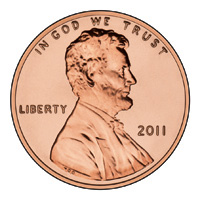

This will open a project that contains the images you will need in this lesson. aia file, go to App Inventor and do File/Import and import in the downloaded.
RANDOM COIN FLIP DOWNLOAD
If the template does not open, download the. Open App Inventor with the Coin Flip Media Only template. In the AP CSP exam, the function RANDOM(1,3) is used to return a random number from 1 to 3 (including 1, 2, or 3).

In App Inventor, we will use the random block to get pseudo- random numbers. The problem with this experiment is you didn't perform enough trials to draw any conclusion about the hypothesis that this is a fair coin. If you perform this experiment, heads will often come up 10 times, but not always, even though, supposedly, the probability of getting a head on a fair coin toss is 50%. Did the count match your explanation? Based on this experiment, could you conclude that your coin is fair or biased (not fair).Now flip the coin 20 times and count the number of heads.If you flip a fair coin 20 times - any type of coin will do - how many heads would you expect to get? Write down your answer.
RANDOM COIN FLIP GENERATOR
use target vocabulary, such as model, random, random event, and random number generator while describing app features and User Interface with the support of concept definitions and vocabulary notes from this lessonīefore getting started on the Coin Flip app, try this simple experiment:.We'll explore the idea of randomness later in this Unit. unless the "randomness" that's built into App Inventor is not a very good model of true You simulate a coin flip lots of times, it should also come up heads close to 50% of the time You flip a real coin lots of times, it should come up heads close to 50% of the time. In part two, we will extend the app to perform the coin flip many times in order to experiment with the idea of "randomness" or "fairness". The result will be displayed as an image depicting either the heads or tails Heads will be representedīy 1 and tails by 2, and flipping the coin will be a matter of randomly assigning 1 or 2 to The coin will be represented by a global variable. In the first part we will build a simple app that simulatesĪ coin flip.

That is, it may come closer than a real coin flip to producing "heads" 50% of the time. It may actually be fairer than a real coin flip. In fact, because it uses App Inventor's random number generator, Introduction and Goals ¶Ĭoin Flip is an app that simulates a coin flip. Pettygrove won and named the city Portland.Time Estimate: 45 minutes 4.5.1. Heads or tails was already important to resolve major impasses: in the USA, in 1845, Asa Lovejoy and Francis Pettygrove threw the coin to find out who would choose the name of the new city in the state of Oregon. In football, for example, the coin decides who will have the right to choose the field or the ball. A frequent use is the decision of who will make the initial move in some activity. This method of choice necessarily has only two possibilities of result, which have the same probability of occurrence. It is commonly used to choose between two alternatives or to resolve a dispute between two parties. Heads or tails is a simple game, which consists of throwing a coin into the air to then check which side of it is facing up after it has fallen. Head or tails are a great tool to make a quick decision easily, as the only thing you need is a coin.


 0 kommentar(er)
0 kommentar(er)
